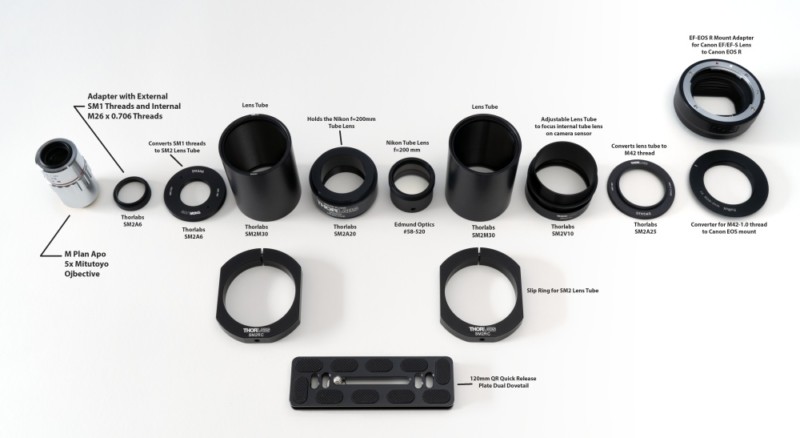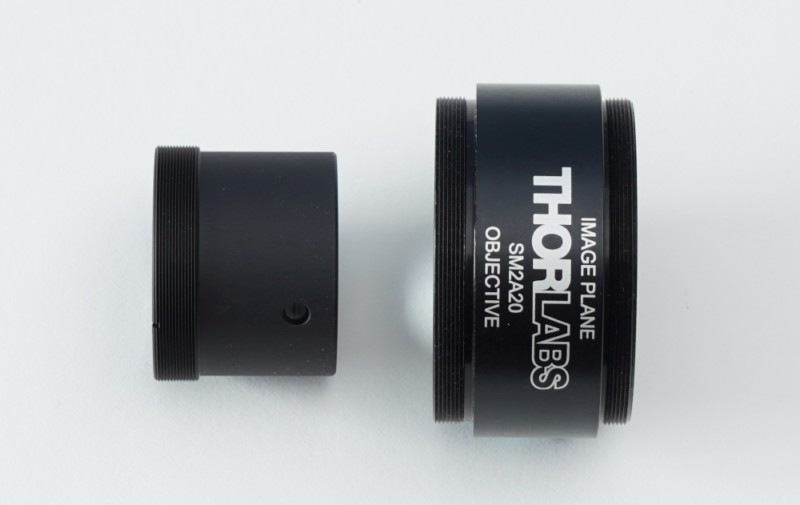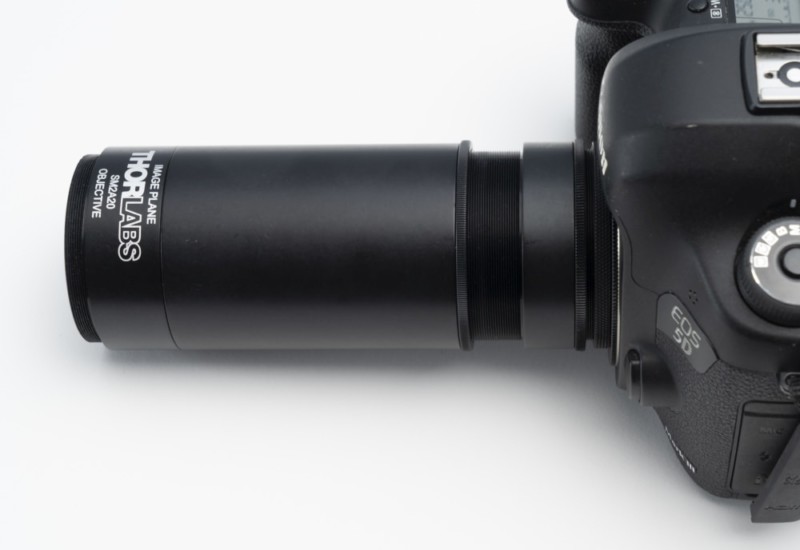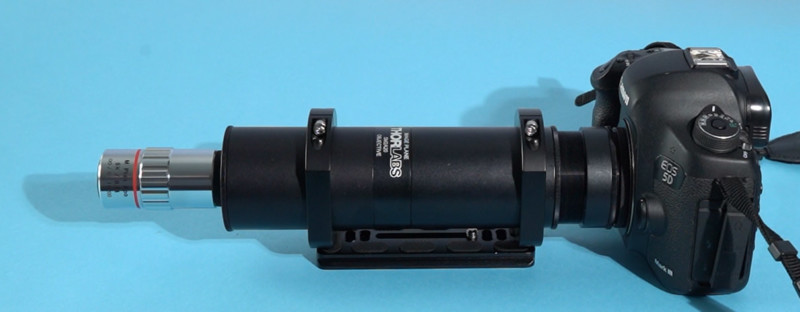Using Long Working Distance Macro Lenses with Your Camera
![]()
The Mitutoyo long working distance objectives are popular in macro photography, but often difficult to mount to a camera.
The benefit to using these in a macro or micro range is that the configuration provides more room to illuminate the subject, and also to image at a more convenient distance for focus stacking techniques.
LDW lenses are readily available from a number of sources such as Edmund Optics, Mitutoyo, Newport Corporation, and Olympus, and they come in a variety of focal lengths, each designed for a specific magnification.
Although the mount for most is a standard RMS thread, they are intended to be used in specific optical systems. So, if you want to use one on a typical DSLR or mirrorless camera, in order to avoid the time and money needed to design and machine parts, the trick is arranging a readily available series of adapters, tubing, and optics, that you can simply screw together.
For this project, my choice of suppliers was Thorlabs for all the components and Mitutoyo for the LDW lenses.
Mitutoyo objectives are lenses designed to have the best resolution possible at the longest working distance. The typical series of lens is designed for 5x, 10x, and 20x magnification (there is also a 50x objective and other brands go up to 100x). The 5X BD Plan Apo objective has a working distance of 34 mm with a 14um depth of field. The 10x has a working distance of 34mm and a depth of field of 3.5um. The 20x lens has a 20 mm working distance with a 1.60um depth of field.
The lenses are designed to match modern optical microscope objectives and have the light at the back of the objective leave with the rays parallel. This design criterion is important for placing optical filters in the path, as well as utilizing an array of optical illumination techniques. The set of lenses with the BD designation is designed for bright-field or dark-field use.
The parallel light that leaves the objective has to be focused down to the camera sensor and this is the role of the tube lens. The Mitutoyo objectives are designed for use with a tube lens of 200mm focal length. From a design point, this means that the tube lens needs to be 200mm from the camera sensor. Also, keep in mind that apertures need to be matched so that the tube lens does not limit the light hitting the camera sensor.


Our assembly starts with the 200 mm tube lens screwed into the Thorlabs SM2A20 internal tube mount. The lens assembly is then secured to a 3” lens tube (SM2M30), an adjustable lens tube (SM2V10), a tube coupler SM2T2 – SM2, and ends in a conversion to an M42x1 (Pentax Screw) mount. Lens adapter rings are available for most major DSLR and Mirrorless Cameras from Amazon and other suppliers – photos here show an M42x1 (Pentax Screw Mount) to Canon EOS EF Mount attached to a Canon EOS EF to EOS R mount for my two cameras (but you can go directly from M42x1 to Canon EOS R).
Note: Some camera mount adapters have a chrome interior finish which will create wild internal reflections and lens flare. These adapters will need to be coated with matt black paint.
![]()
Once the tube lens is attached to your camera, the adjustable ring SM2V10 is rotated and adjusted so that the camera achieves a sharp focus on an object at infinity far away. Pointing the camera out the window works fine for this.

In front of the lens tube is a second Thorlabs SM2M30 lens tube and then a conversion ring SM2A6 is used to hold the SM1 thread adapter for the Mitutoyo lens mount.
Two Thorlabs SM2RC tube mounts are used to hold the lens in place. Here the lens is mounted to a 120 mm long Arca-Swiss compatible QR quick-release plate that has been modified to hold the rings in place with 8-32 screws.
![]()
![]()
![]()
Below is a parts list with prices current to November 2022.

Here’s a video of assembling the parts:
Happy photography!
About the author: Ted Kinsman is the 2019 recipient of the Schmidt Laureate for outstanding contributions to the progress of biocommunications. Kinsman worked as an optical engineer, a physicist, and a physics instructor before joining the Photographic Sciences Department at RIT. His work has appeared on The Discovery Channel, Crime Scene Investigations (CSI), The X-Files, South Park, The Tyra Banks Show, and The Frozen Planet series. Kinsman is currently an Associate Professor in the School of Photographic Arts and Sciences (SPAS) where he teaches Photographic Instrumentation, Scanning Electron Microscopy, and High-Speed Imaging. His most recent book is Cannabis: Marijuana under the microscope.
Bob Rose has more than 45 years of experience in the industry as a photographer, educator, and consultant. For 17 years he was Editor-at-Large for Photo District News and Rangefinder and is now affiliated with Digital Imaging Reporter. Currently an Associate Professor of Photography at the Rochester Institute of Technology, he is the 2019 recipient of the Chuck Westfall Technical Education Award.